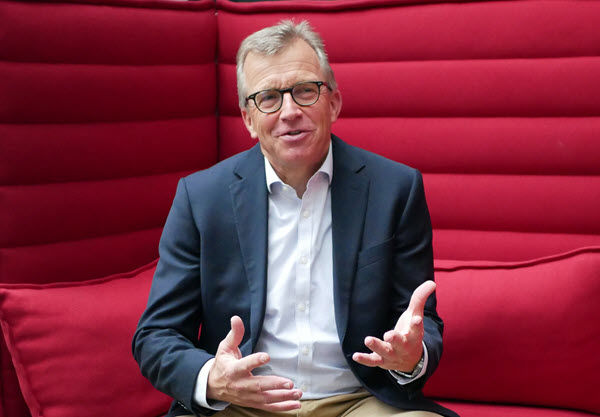
Hydropower - a classic energy essential
Hydropower holds its own in the world’s energy mix – for the past 125 years
There are some things that never go out of style. A good pair of blue jeans. A classic leather handbag. And hydropower. It may not be a wardrobe essential, but over the last 125+ years, it has been an energy essential. It’s been the single, most constant energy source that the world has enjoyed since the 1900s.
The story of hydropower is one that Thomas Leitl knows well. He’s a Principal Business Developer for Statkraft in Germany, and he proclaims himself to be fascinated by the technology.

“You see, hydropower really had its birth in the mid-1850s, when engineers spanning Britain, the US and Austria made significant contributions to turbine development,” Leitl explains. These advancements in turbines made it feasible to generate large quantities of power, truly opening the door to the future of hydro as a power generation technology.
Hydropower starts rolling out in early twentieth century, lighting villages and powering industry
As 1900 approached, hydropower was finally ready for the mainstream. This was the first phase of hydropower’s development. It was a period not unlike the roll-out of internet in modern times, as electricity was brought to villages, remote valleys and transformed industries, bringing with it jobs and spurring on further development. Hydropower served as the primary energy source in large parts of the world, including Norway, where Statkraft first got its footings in 1895.
“It was 125 years ago this year that the Norwegian state decided that hydropower was the best way for them to generate electricity for their citizens. They wanted to bring light to its dispersed population, and they needed large quantities of electricity to enable their growing industries. That was the start of Statkraft,” says Leitl.
Coal, oil and nuclear gain ground, but hydropower remains present
The dominance of hydropower lasted until the mid-20th century, when much more cost-efficient means of electricity were gaining ground. Coal, oil and nuclear power took their place in the energy mix, providing a more palatable price tag for consumers of the time. But despite the growing number of viable energy alternatives, hydropower still found its place, as a stable source when the pressure was high and electricity was peak.
“Price and availability have always been important factors, and back then, you could build out as much coal, gas and nuclear as you wanted, whereas hydro is natural and you needed a water source and elevation,” he says.
Times have changed, awareness has grown, and public persuasion is leaning towards hydropower
We are now at the start of a third phase, in which nations are saying ‘no more’ to coal and nuclear, and at the same time ramping up their investments in wind and solar. Wind and solar are still in their early days, considered volatile energy sources due to their dependency on blowing wind or shining sun, respectively. That makes the need for a third leg of renewables dynamic essential.
“Even as we enter into this third era, we see that hydropower still has its place in the mix. It completes the renewables trio: wind, solar and hydro. Hydro is perhaps the stabilizing factor in this trio, like a low and steady bass tone, ensuring that the volatility of the others goes unnoticed by the consumers,” explains Leitl.
Hydro is an essential part of the renewable energy mix
The cost of hydropower is no longer what it once was. Technological innovations have made it an affordable energy source, which is good news according to Leitl, because a future power mix of wind and solar simply won’t work without hydro.
Hydropower is a technology that has always been able to define its role in the respective energy markets, over more than a century of technological advancements, political swings and societal change. It’s an energy source defined by its own versatility, enabling it to adapt and take on new positions in new environments.
“Coal also came into play around 150 years ago, but today it’s no longer considered acceptable due to our greater awareness about its impact on our climate. But hydro has always been there and will always be there,” Leitl asserts.
In the future where renewables are the only source of energy to the world, hydropower will have its place, a firmly planted leg supporting its colleagues, the sun and the wind, in their mission to light up the world. For Statkraft, a company that has long since grown beyond the borders of Norway, this is something they’ve always believed in. Because, they say, our planet depends on it. This is the energy future.